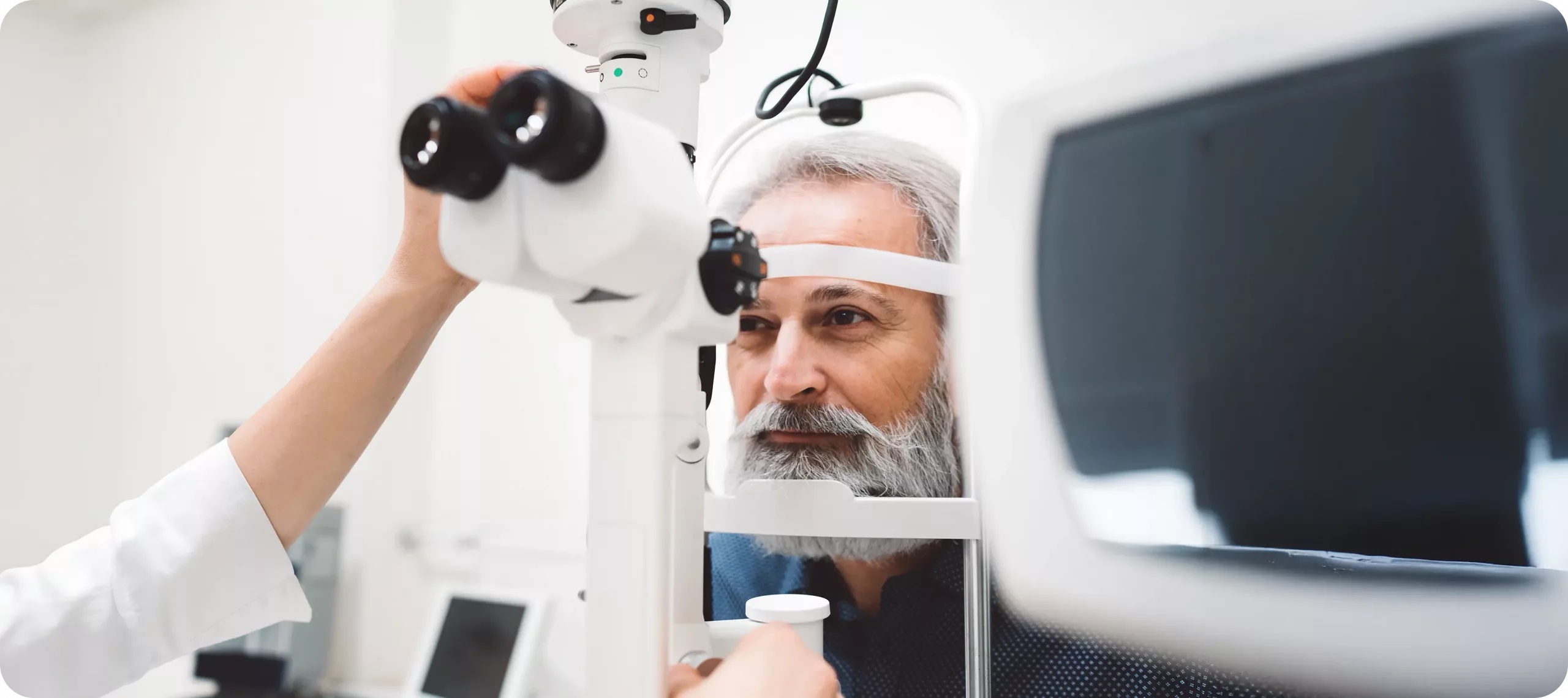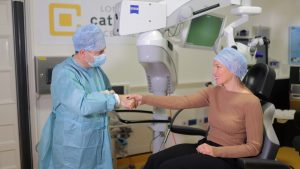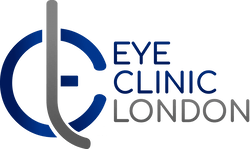How Long Does It Take to Heal from RLE?

Refractive lens exchange (RLE) is a highly effective procedure that can correct vision problems such as presbyopia, hyperopia, myopia, and early cataracts. It involves replacing your natural lens with an artificial intraocular lens (IOL), offering long-term vision improvement.
One of the most common questions patients ask is: “How long does it take to heal from RLE?” While RLE is minimally invasive, recovery varies from person to person. In this guide, I’ll walk you through the typical healing timeline, what you can expect at each stage, and tips to ensure a smooth recovery.
Understanding the recovery process helps you plan your schedule, manage expectations, and protect your vision post-procedure.
Understanding RLE Surgery

RLE surgery, also called clear lens extraction, is very similar to cataract surgery but with one key difference: it’s performed mainly to improve your vision, not because your lens is cloudy. If you’ve been struggling with reading glasses, long- or short-sightedness, or age-related changes in your vision, RLE might be an option worth exploring.
Here’s what you can expect during the procedure:
- First, your natural lens is carefully removed. Don’t worry your surgeon takes every precaution to protect your eye and make the process as smooth as possible.
- Next, a specially designed artificial lens, called an intraocular lens (IOL), is inserted. This lens is chosen based on your specific vision needs, so you can see more clearly without relying on glasses as much.
- Finally, your eye is closed, and the procedure is usually completed in under an hour. Most people are surprised by how quick and straightforward it feels.
RLE is generally very safe, and many patients notice an improvement in vision almost immediately. That said, how quickly you recover and how comfortable you feel depends on several factors, including your age, overall health, and how closely you follow the post-operative care instructions provided by your surgeon. By taking care of your eyes and attending all follow-up appointments, you’ll give yourself the best chance of a smooth, speedy recovery.
Initial Healing Stage: Day 0–2
The first 48 hours after your RLE surgery are crucial for getting your recovery off to a smooth start. During this early phase, your eyes are adjusting to the changes, so it’s normal to notice a few temporary sensations. Here’s what you can expect and how you can take care of yourself:
- Mild discomfort or irritation: Your eyes might feel scratchy, watery, or slightly sore. Some people describe it as a gentle grittiness or a tired-eye feeling. This is perfectly normal and usually settles with the help of the eye drops your surgeon prescribes. If you experience significant pain, make sure to contact your ophthalmologist.
- Blurry vision: Right after the procedure, your vision may appear hazy or out of focus. Don’t worry this is just your eyes adjusting. Most patients notice gradual improvement over these first two days, but it’s important to avoid straining your eyes with reading or screens for long periods.
- Sensitivity to light: Your eyes may feel unusually sensitive to sunlight or bright indoor lighting. Wearing sunglasses when you step outside or using soft lighting indoors can help reduce discomfort.
During this stage, it’s essential to avoid rubbing or pressing your eyes, maintain good hygiene, and apply any prescribed medications exactly as directed. Even simple things like washing your hands before touching your eyes or using a clean tissue to dab away tears can make a big difference. By taking these precautions seriously, you’re helping your eyes heal efficiently and lowering the risk of complications.
Remember, this early phase sets the tone for the rest of your recovery, so giving your eyes extra care now will pay off in the days and weeks ahead.
Early Recovery: Day 3–7
As you move into the first week after your RLE surgery, your eyes are continuing to adjust to the new lens. You’ll probably start noticing gradual improvements, and things should feel a bit more comfortable each day. Here’s what to expect:
- Vision clarity improves: The initial blurriness you experienced right after surgery usually begins to clear up as any swelling starts to subside. You might notice that your vision feels sharper day by day, but it’s normal if it’s not perfect yet.
- Mild redness or irritation: Slight redness or a feeling of irritation may still be present. This is a normal part of the healing process and should gradually fade as your eyes recover.
- Reduced discomfort: Any soreness, scratchiness, or tired-eye feeling should become much less noticeable by the end of the first week. Most people feel increasingly comfortable during this phase.
During this stage, it’s important that you avoid strenuous activities, heavy lifting, or swimming, as these can increase the risk of infection or put unnecessary strain on your eyes. Simple precautions, like keeping your hands clean and not rubbing your eyes, will help your recovery go smoothly.
Remember, everyone heals a little differently, so be patient with yourself and your eyes. Following your ophthalmologist’s guidance closely now will make a big difference in how quickly you feel back to normal.
Intermediate Recovery: Week 2–4

During the second to fourth weeks after your RLE surgery, your eyes are settling into their new normal. This is an important period for stabilising your vision and making sure everything is healing properly. Here’s what you can expect:
- Improved visual acuity: By this stage, many patients notice their vision becoming noticeably clearer. You should be able to go about your daily activities like reading, working on a computer, or driving with much more ease.
- Minor fluctuations: It’s normal if your vision still feels a little inconsistent from time to time. These small fluctuations happen as your eye continues adjusting to the new lens and should gradually settle.
- Follow-up appointments: You’ll likely visit your ophthalmologist for routine check-ups. They may measure your eye pressure, examine your healing progress, and ensure there are no complications. These visits are key to keeping your recovery on track.
During this phase, it’s important that you continue using any prescribed eye drops and take precautions to protect your eyes. Avoid exposure to dust, irritants, and direct sunlight sunglasses are your friend! By taking these simple steps, you’re helping your eyes heal safely and giving yourself the best chance of achieving the sharp, comfortable vision you’re hoping for.
Long-Term Recovery: Month 1–3
By the end of the first three months after your RLE surgery, your eyes usually reach their maximum recovery, and your vision should feel stable and reliable. Here’s what you can expect during this period:
- Stable vision: Most people achieve consistent vision correction by now. You should notice that tasks like reading, working on a computer, or driving feel much easier and clearer than before.
- Minimal discomfort: Any lingering soreness, scratchiness, or irritation is usually gone by this stage. Your eyes should feel comfortable throughout the day.
- Full activity: You can confidently return to your normal activities, including sports, exercise, driving, and screen time, without worry.
It’s also common for some people to notice subtle improvements in vision during these months as your brain fully adapts to the new lenses. This gradual fine-tuning is part of the process, helping you see more naturally and comfortably over time.
By this stage, if you’ve followed all your post-operative instructions and attended your follow-up appointments, you can enjoy the benefits of your RLE surgery with confidence and peace of mind.
Factors Affecting Your RLE Recovery Time
Recovery from RLE surgery isn’t the same for everyone. How quickly your eyes heal can depend on a few personal factors:
- Your Age
If you’re older, your healing might take a little longer. That’s because tissue elasticity and cellular regeneration naturally slow down over time, so your eyes may need extra care and patience. - Your Overall Eye Health
Existing eye conditions like dry eye, glaucoma, or previous eye surgeries can influence how fast you recover. Being aware of these factors and discussing them with your ophthalmologist helps set realistic expectations. - The Type of IOL You Receive
Not all lenses are the same. Multifocal or toric intraocular lenses (IOLs), for example, may take a few extra weeks for your vision to fully stabilise. Your surgeon will guide you on what to expect based on the lens chosen for you. - Your Lifestyle and Compliance
How well you follow post-operative instructions makes a huge difference. Using your prescribed eye drops, protecting your eyes from strain, avoiding irritants, and keeping all follow-up appointments can help speed up your recovery and ensure the best possible results.
Remember, every person heals differently, so it’s important to listen to your body and give your eyes the care they need. By taking these factors into account, you’ll be in a better position to enjoy clear, comfortable vision sooner.
Tips for a Smooth RLE Recovery
If you want your eyes to heal quickly and your vision to stabilise properly, following a few simple tips can make a big difference:
- Use your prescribed eye drops exactly as directed. These drops help prevent infection, reduce inflammation, and keep your eyes comfortable. Skipping doses or using them inconsistently can slow your recovery.
- Avoid rubbing your eyes. Even a gentle rub can dislodge your new lens or irritate your cornea, so be careful especially during the first few weeks.
- Wear sunglasses outdoors. Protecting your eyes from UV light and bright sunlight helps reduce discomfort and supports healing.
- Limit screen time and reading at first. Giving your eyes regular breaks from computers, phones, or books can prevent strain and allow your vision to settle more smoothly.
- Follow all post-operative instructions from your ophthalmologist. Your surgeon’s guidance is tailored to your eyes and your recovery, so sticking to their advice is key.
By taking these steps seriously, you’re giving your eyes the best chance for a smooth, fast recovery and reducing the risk of any complications. Remember, a little extra care now pays off in clearer, more comfortable vision later.
Signs of Complications to Watch For
RLE surgery is generally very safe, but it’s important that you know when something isn’t right. If you notice any of the following signs, contact your ophthalmologist immediately:
- Persistent redness or pain: Some mild redness and soreness are normal in the first few days, but if it continues or worsens, it could signal a problem.
- Sudden decrease in vision or flashing lights: Any abrupt change in your vision should be taken seriously, as it may indicate an underlying complication.
- Swelling that doesn’t improve: A little puffiness is normal, but persistent or increasing swelling can be a warning sign.
- Unusual discharge from the eyes: Any green, yellow, or cloudy discharge isn’t typical and should be evaluated by your doctor.
Remember, early intervention can make all the difference. If you experience any of these symptoms, don’t wait reach out to your ophthalmologist right away. Acting quickly helps protect your vision and keeps your recovery on track.
When Can You Resume Normal Activities?

After your RLE surgery, you’ll probably be eager to get back to your usual routine. Here’s a guide for what you can do and when:
- Light daily activities: Most people can start reading, watching TV, or going for short walks within a few days. These gentle activities are usually safe and won’t strain your eyes.
- Driving: Many patients are able to drive after 24–48 hours, but this depends on how clear your vision is and your doctor’s advice. Make sure you feel fully confident behind the wheel before getting back on the road.
- Exercise: Wait until your ophthalmologist confirms your eyes are ready before resuming exercise, including walking, stretching, or more strenuous workouts.
- Swimming and eye makeup: Wait until your ophthalmologist confirms your eyes are ready before resuming swimming or applying eye makeup.
By following these guidelines, you’ll help your eyes heal safely and reduce the risk of complications, so you can enjoy the full benefits of your improved vision sooner.
Long-Term Vision Stabilisation
Even after your initial recovery, your eyes are still adapting to the new lens, and it’s important to understand that your vision may continue to improve gradually over several weeks. Here’s what you can expect as your eyes settle into their new normal:
- Enhanced visual clarity within the first month: Many patients notice that their vision keeps sharpening during these early weeks. Everyday tasks like reading small print, working on a computer, or driving often feel much easier. Colors may appear more vivid, and your overall visual comfort improves as your eyes adjust.
- Full adaptation by 6–12 weeks: By this time, your brain and eyes have typically fully adapted to the intraocular lens (IOL). This means your vision should feel more natural, balanced, and comfortable throughout the day, whether you’re focusing up close or at a distance.
- Sustained vision correction for years: Once your eyes have fully adapted, the benefits of RLE can last a very long time, potentially reducing or even eliminating your reliance on glasses or contact lenses for many daily activities.
Even during this long-term phase, regular follow-up appointments with your ophthalmologist are key. They help ensure your eyes are continuing to heal properly, let your doctor address any minor issues early, and give you reassurance that your vision is stabilising as expected.
Remember, while your recovery timeline is generally predictable, everyone’s eyes adapt at their own pace. Patience and careful post-operative care during this period can make a significant difference in your overall visual outcome.
FAQs About RLE Recovery
- How soon will I notice improved vision after RLE?
Many patients notice some improvement in vision within the first 24 to 48 hours after the procedure, often describing the world as slightly sharper or brighter. However, full visual clarity typically takes several weeks as your eyes adjust to the new lens and any minor post-surgical swelling settles. Some people may experience slight fluctuations in their vision during this time, which is completely normal. - Can I read or use screens immediately after surgery?
Light reading or screen use is generally possible within the first day or two, but it’s important not to overdo it. Extended screen time or focusing on small text for long periods can strain your eyes and slow down healing. Your ophthalmologist will guide you on when you can safely resume longer periods of reading or computer work. - When is it safe to drive after RLE?
Driving is usually permitted 24 to 48 hours after surgery, provided your vision is clear enough to meet legal requirements and you feel confident behind the wheel. Some patients may need a few more days, especially if they are adapting to multifocal or toric lenses. Always follow your doctor’s advice before returning to driving. - Will I experience pain during recovery?
Mild discomfort, scratchiness, or a gritty sensation is common during the first few days after RLE. This usually eases significantly as your eyes heal. Severe or persistent pain is unusual and should be reported to your ophthalmologist immediately, as it could indicate a complication that requires prompt attention. - Are there risks of infection after RLE?
The risk of infection after RLE is very low, particularly if you follow your post-operative care instructions carefully. Using prescribed eye drops on schedule, avoiding rubbing your eyes, and maintaining good hygiene are key steps in preventing infection. Promptly reporting any unusual redness, discharge, or pain can help your ophthalmologist address potential issues early. - How long before I can resume exercise?
Light physical activity, such as walking or gentle stretching, is typically safe after about a week. Strenuous workouts, heavy lifting, and contact sports should be avoided until your ophthalmologist confirms that your eyes have healed sufficiently. Returning too soon to vigorous activity can increase the risk of complications or slow recovery. - Can my vision fluctuate during recovery?
Yes, minor fluctuations in vision are normal during the first few weeks after RLE. Your eyes are adjusting to the new lens, and small variations in clarity or focus can occur. Over time, usually by six to twelve weeks, these fluctuations settle as your eyes and brain fully adapt to the IOL. - Should I avoid sunlight or wear sunglasses after surgery?
Protecting your eyes from UV light and bright sunlight is important, particularly in the first few weeks after surgery. Wearing sunglasses when you are outdoors helps reduce discomfort and supports proper healing. Indoors, adjusting lighting to softer levels can also help, especially if your eyes feel sensitive. - How long will it take to fully adapt to the intraocular lens?
Full adaptation to your new lens usually occurs between six and twelve weeks after surgery. During this period, your brain and eyes learn to work with the IOL, allowing you to see naturally at various distances. Some patients notice subtle improvements in vision even after the first month as this adaptation continues. - Will I still need glasses after RLE?
Many patients experience significant reductions in their dependence on glasses or contact lenses, especially for distance vision. However, some individuals may still need glasses for certain tasks, such as reading fine print, depending on the type of lens implanted. Your ophthalmologist will advise on realistic expectations based on your specific IOL choice.
Final Thoughts: What to Expect After Refractive Lens Exchange
When you have refractive lens exchange, you’ll likely notice clearer vision within just a few days and for most people, full visual stability develops over the next one to three months.
That said, everyone’s eyes heal at their own pace. Your recovery can depend on factors like your age, general eye health, and the type of intraocular lens (IOL) you choose. By following your aftercare instructions closely, attending follow-up appointments, and protecting your eyes, you’ll set yourself up for the best possible outcome.
If you’re thinking about having refractive lens exchange in London, you can reach out to us at Eye Clinic London. Our experienced ophthalmologists will talk you through the recovery process, help you understand what to expect and create a tailored plan to ensure you heal comfortably and see clearly for years to come.
References:
- Alió, J.L., Shibu, R., Kook, D., and Tassin, T. (2014). Refractive lens exchange in modern practice: when and how. Journal of Refractive Surgery / PMC, [online] Available at: https://www.ncbi.nlm.nih.gov/pmc/articles/PMC4655463/
- Kaweri, L., Ashraf, M., and Siddiqui, Z. (2020). Review of current status of refractive lens exchange and related outcomes. PMC, [online] Available at: https://pmc.ncbi.nlm.nih.gov/articles/PMC7856935/
- Khoramnia, R., et al. (2024). Functional outcomes after refractive lens exchange with advanced intraocular lenses. https://www.sciencedirect.com/science/article/pii/S0002939424003519
- Chan, E. and Varma, S. (2025). Refractive lens exchange – the evidence behind the practise. Eye, 39, pp.208–209. DOI:10.1038/s41433-024-03478-3
5. Rodríguez-Calvo-de-Mora, M., et al. (2023). Retinal detachment after refractive lens exchange: review of risk, prevention, and outcomes. https://www.sciencedirect.com/science/article/abs/pii/S2173579423001081

